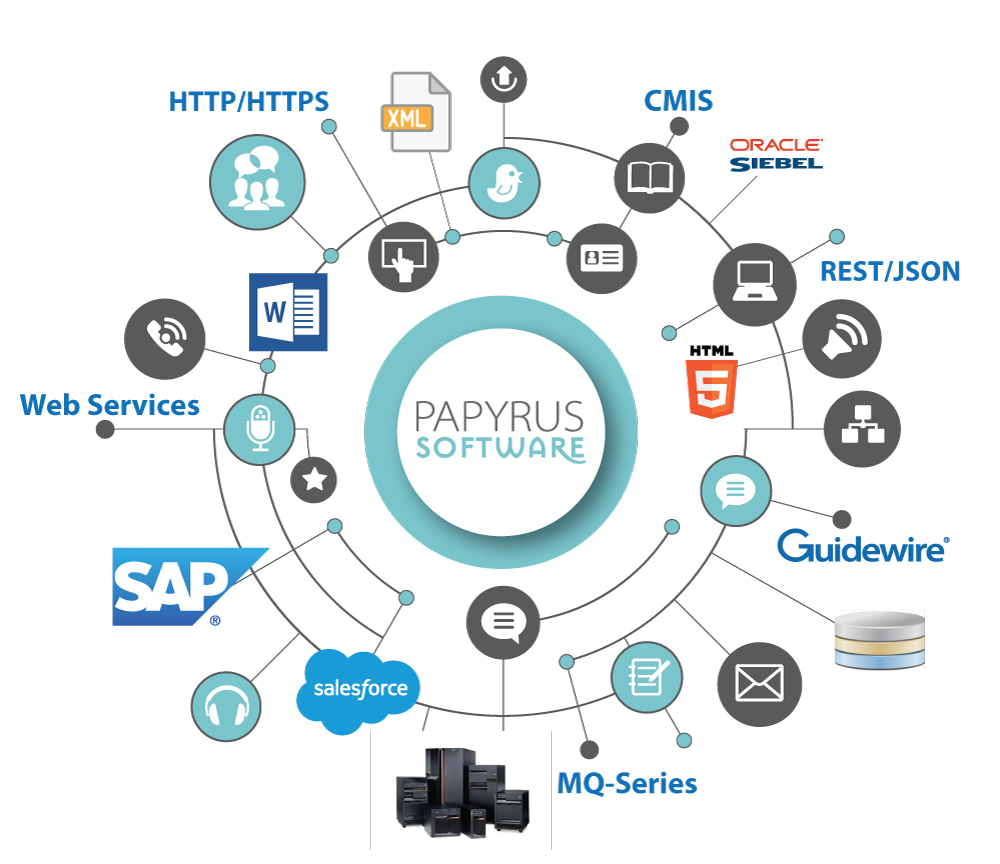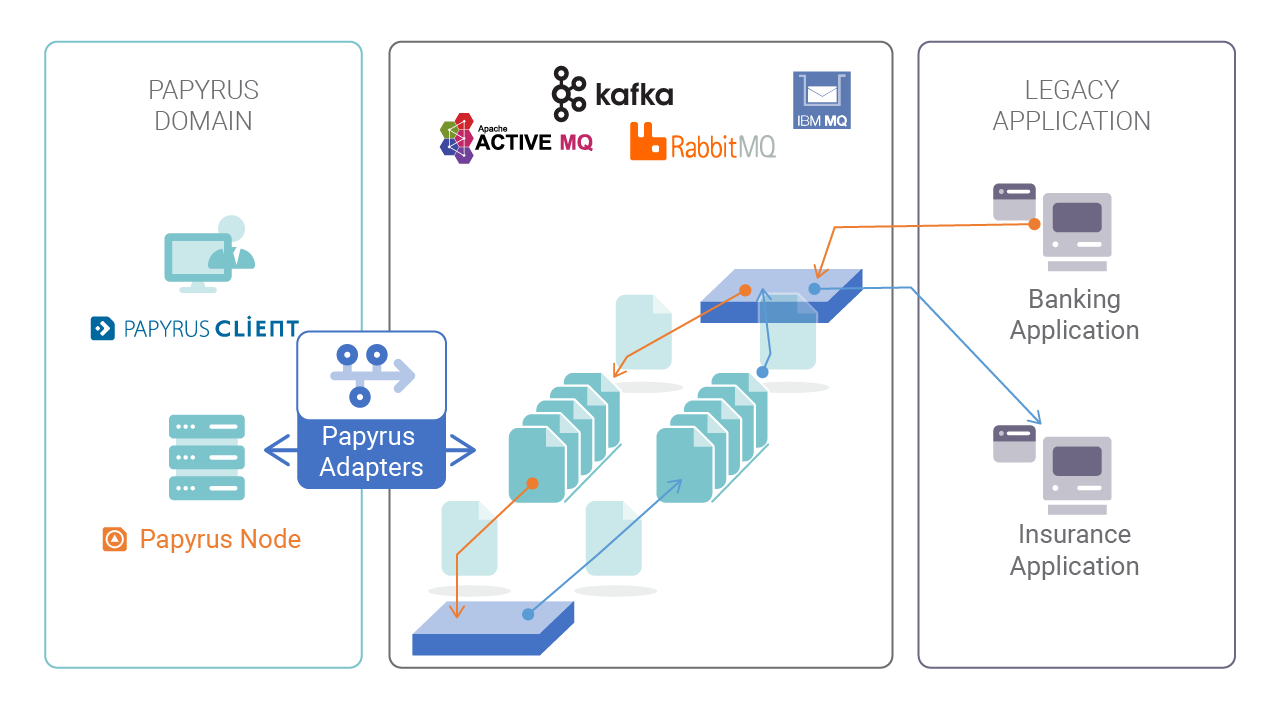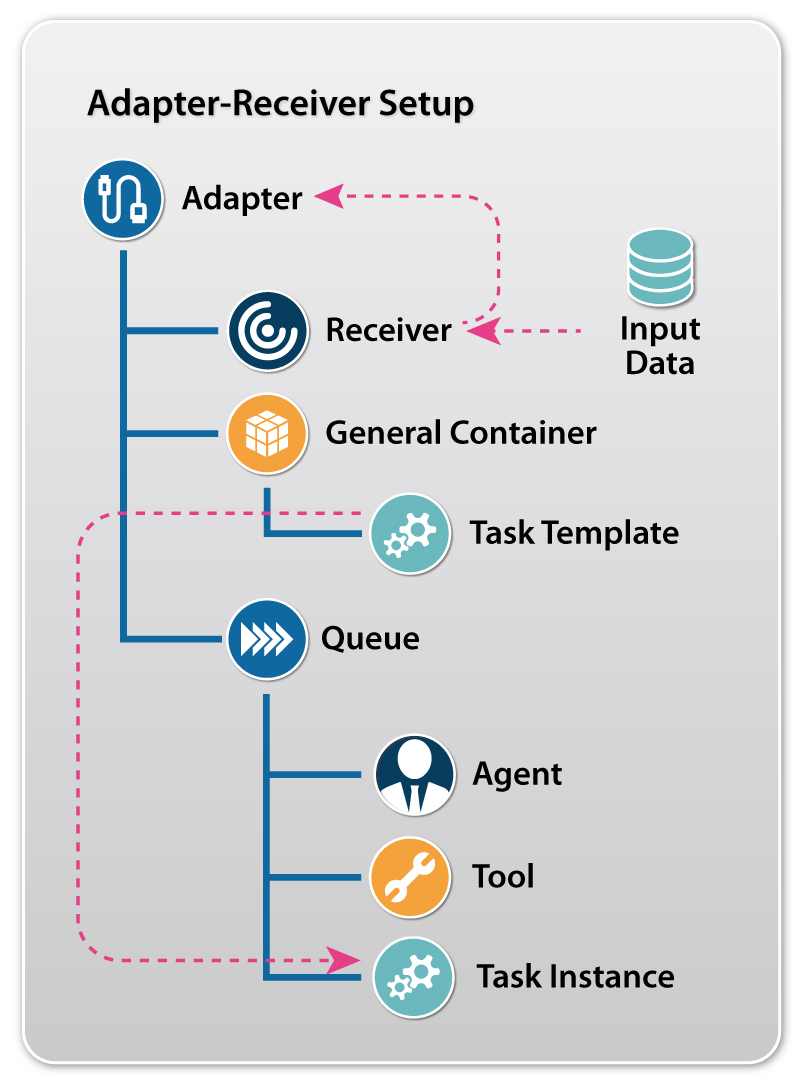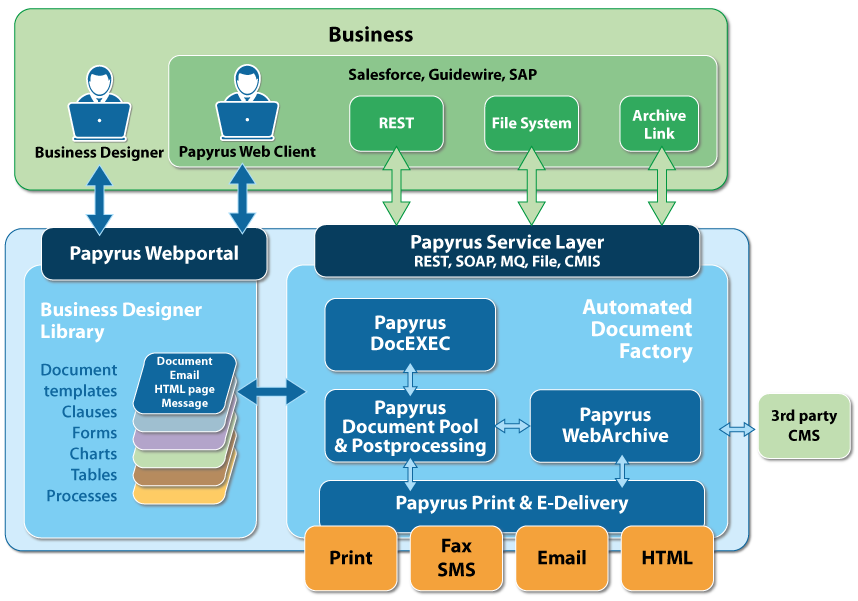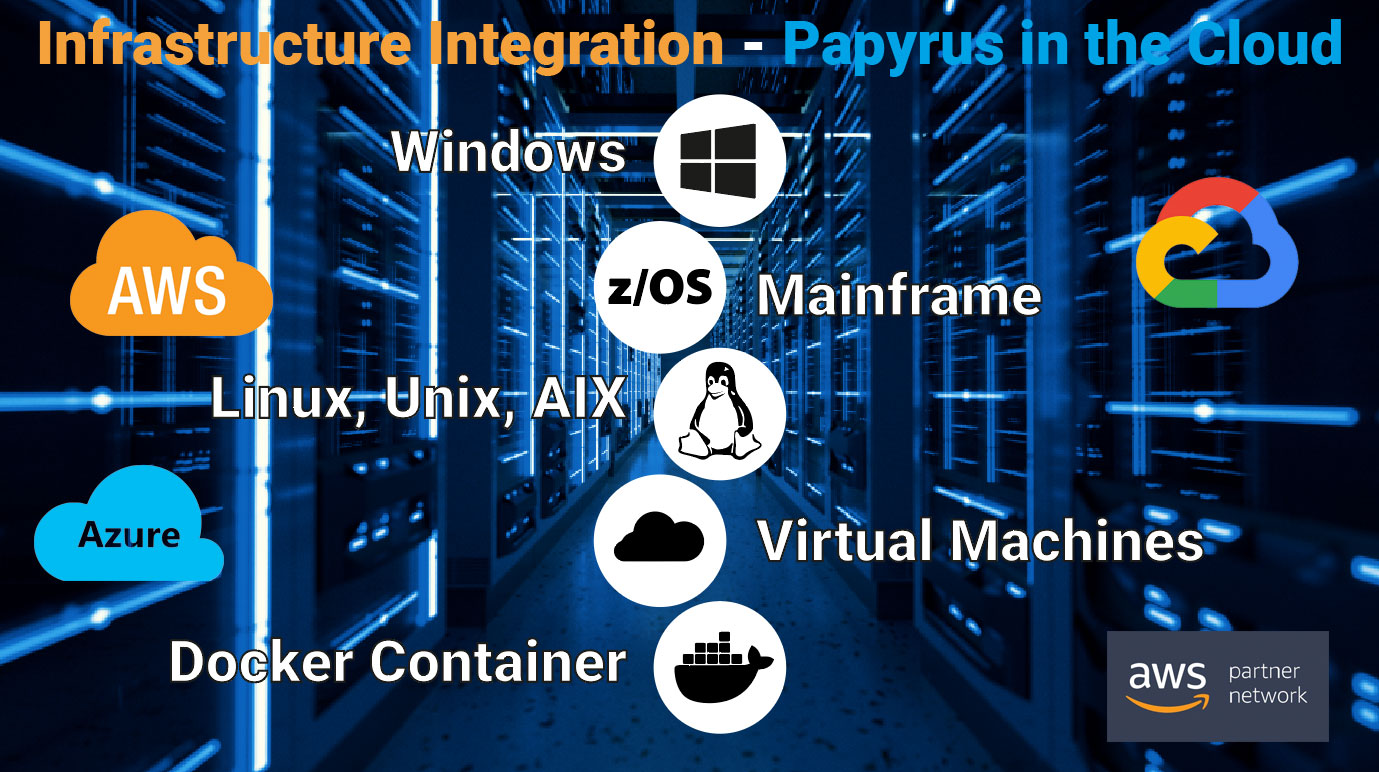Choose from a broad variety of Papyrus SOA Adapters
Simplified Integration, Interoperability & Connectivity
Papyrus solutions interface with any business system, as well as back-office users, by leveraging Service-oriented Architecture (SOA) to flexibly integrate via loose coupling and configuration without hard-coded interfaces.
Any system, application or database that supports at least one of the most common interfaces and protocols provided by a range of Papyrus SOA Adapters and Type Managers can be simply and easily integrated to ensure complete interoperability and connectivity:
- Online channels/portals - Web Services, REST/JSON, SOAP, HTTPS
- Email/messaging - SMTP, POP3, MAPI, IMAP, EWS, SMS
- Mainframe - JES 2/3 & CICS, MQ
- Databases - Oracle, DB2, MS-SQL, ODBC
- Business Application integration - SAP, Social, Mobile-REST
- Java, .Net, MQ-Series, FILE, XML, FAX, VOIP, SNMP, LDAP, CMIS
Data Integration
The integration of business data usually requires bi-directional communication between Papyrus and external business systems. Data can be generated by external systems for processing in Papyrus and, conversely, Papyrus can return documents to an external archive system after processing is complete.
Data exchanged through Papyrus Adapters can be used directly for case and document processing, such as formatting and/or assigning values to business data objects of the Papyrus WebRepository business solutions. Apart from integration through adapters, it is also possible to exchange line data and resources between platforms via FTP. For AS/400 iSeries specific conversion procedures are required.
Messaging Systems Integration
Adapter for Queue based systems.
Bring your legacy or third-party applications based on Message Queue / Topics seamlessly into communication with Papyrus.
Advantages
Papyrus Adapters help minimize the cost and risk of interfacing with outside systems by foregoing the limitations of commonly used APIs. The Papyrus EAI approach not only prevents a significant amount of custom programming but also ensures that the leading system can continue to monitor the process without passing control to a third-party application or system.
A broad variety of Papyrus Adapters connect the document system with vital business application data from almost any major legacy or mainstream system or application. These platform- and compiler-independent connectors drastically reduce the amount of time and effort required for interfacing with applications that span multiple systems and require the passing of documents and data between these systems.
An adapter acts as a translator that waits for an event to take place. When such an event occurs, The RECEIVER will use its MATCH definitions to find a TEMPLATE in its library which is instantiated and filled according to the TYPE PROPERTIES. In this flexible manner, defining how the adapter reacts to a certain event requires no programming compiling adapter programs or the need to distribute them.
An adapter is the parent object of an adapter/receiver setup. All adapter templates/instances are derived from a single adapter class in the Repository. To be operable, only the Type attribute of the adapter has to contain a string that denotes the receiver type. This string is used in the later on described match criteria (= type properties) to identify the adapter.
Enterprise Application Integration with Customer Communications Management
User Interface Integration
Business users often work with a "leading business application" that is used to perform their core activities. An example of this is the initiation of a document process from the leading system (e.g. SAP), which then passes document data in the background to Papyrus where the document and correspondence definitions are being handled.
The integration of user interfaces can take place based on two scenarios, depending on whether the Papyrus system is the leading application or a third party application is the leading application Papyrus solutions like Business Correspondence, Document Capture, Adaptive Case Management come with a set of UIs.
If UI integration requires a consolidated user interface that allows the business user to work with a single application that provides access to all data from Papyrus and non-Papyrus applications, Papyrus Client/HTML can integrate with other HTML-based applications via iframes or through REST/JSON interfaces.
Integration Architecture
The loosely coupled integration possibilities are shown with external business applications:
- Data integration via Papyrus Adapter
- UI integration in a Browser using iframe or REST interfaces
Papyrus made for the Cloud
Whether deploying to the cloud, virtual machines or on-premise servers, Papyrus Software is designed to natively utilize the unique advantages of your chosen architecture. The modular distribution of products over operating systems, virtual layers and hardware allows us to collect or separate functionality to take full advantage of your infrastructure.





